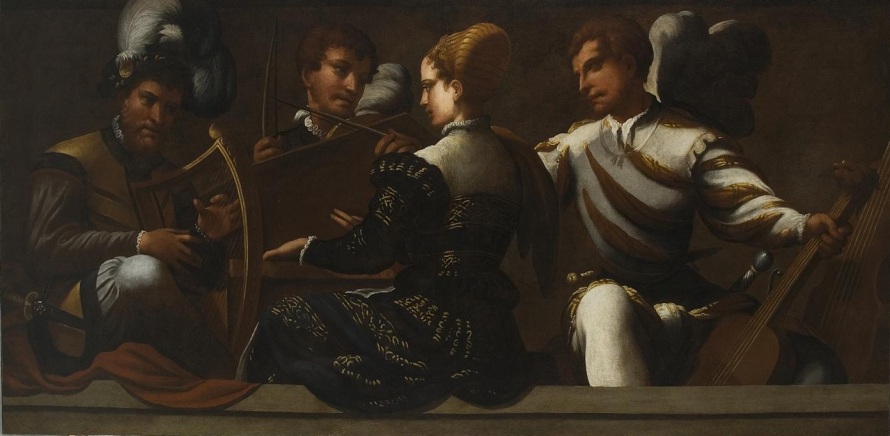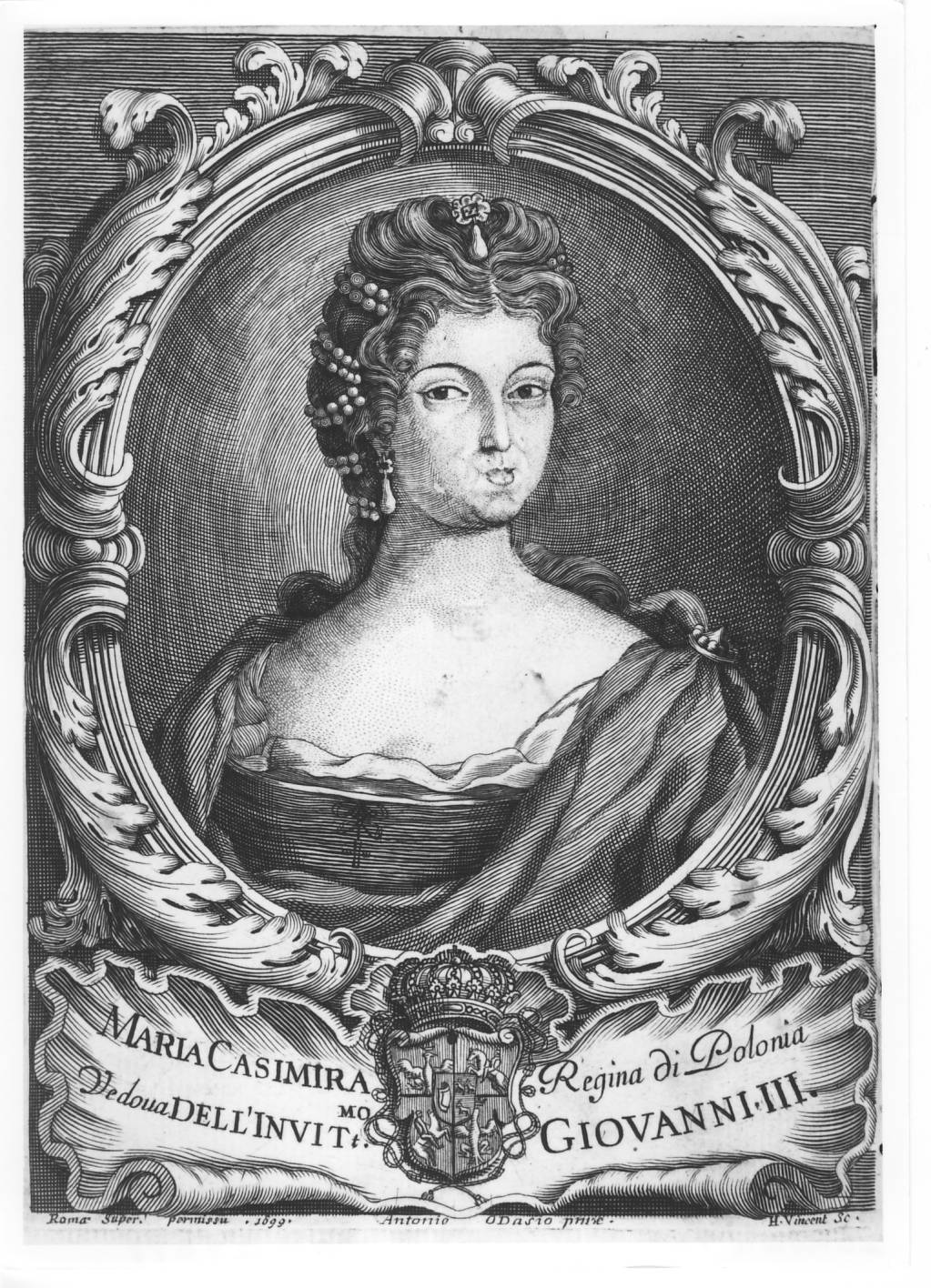Italian Opera at the Turn of the 17th and 18th centuries
“A public entertainment, a splendid stage show of dramas whose verses are sung with the accompaniment of instrumental music, dances and ballet, [a show] with delightful costumes, decorations and astonishing stage machinery”[1], the quoted definition of the 17th-century opera phenomenon was published in Dictionnaire universel by the French writer Antoine Furetière. Nearly entire Europe succumbed to the alluring power and charm of opera. Above all, its Italian variant became a true passion of monarchs who provided patronage for new productions and common people who took pleasure in humming famous arias. Extant sources confirm an unparalleled popularity of this form of entertainment, for instance a letter from Venice composed by an unknown writer in 1697 wherein he observed that, “Indeed, Italian musical operas have become so famous in the whole of Italy that no longer are they sung in big cities alone but even in countless little towns”[2].
Opera performances in Italy were put on in big cities like Venice, Rome and Naples, where private stages functioned alongside public theatres. They were also presented in smaller centres, usually in palaces of aristocratic families. Applying the period terminology, the opera, or rather dramma per musica, was a synthetic form of art which for decades had shaped the tastes of contemporary people. With the help of various muses – poetry, music, dance, pantomime, painting, costumes, stage machinery, masterly singing and acting – it tempted contemporary viewers and attracted them to the theatres. Dramma per musica played a significant role in the 18th-century cultural and political life in Europe. It was both its inseparable element and its flagship. It is impossible to comprehend the then society without getting acquainted with its greatest love and at the same time its weakness, namely the opera.
Dramma per musica means drama for music or drama in music. Such a synthesis of dramatic art and music had its origin in the principles of the Florentine Camerata which drew inspiration from classical Greek tragedy with its perfect verses and magnificent choruses. This group of aristocrats and artists, so significant in the history of music, provided an impetus to the creation of a new type of music called accompanied monody which later led to the appearance of the entire opera art. Soon, similar pieces were composed in Rome and in Venice which became the main centre of dramma per musica in the 17th-century.
An Italian opera libretto was typically made up of three acts and subdivided into many scenes composed on successive recitatives, arias and arioso parts. An act usually ended with an ensemble (in form of a duet or a trio), and the finale contained a chorus of reconciled protagonists, forming the so-called lieto fine, or a happy ending. The types of the characters presented in a 17th-century libretto became gradually standardized. Most of the drammi feature a pair of lovers, a faithful housemaid, a wise king, a scheme-devising villain or a comical nanny invariably played by a man. Little by little new figures came into play. Typical features included dressing up, masks and universal imitations. Dramma per musica was a veritable comedy of errors intertwined with sleep sequences, scenes featuring ghosts, murders and suicides.
As much as opera was loved by many, humanists active at the turn of the 17th and 18th centuries noticed and criticized the absurdities it contained. The presented criticism focused above all on the widespread violation of the principle of probability in the stories, the domination of music over the spoken word, and the ever more powerful singers whose demands of appropriate arias tyrannized poets and composers alike and often ruined the cohesion of the entire piece. Italian intellectuals active at the end of the 17th century received particularly severe attacks by French rationalists who addressed their accusations chiefly at contemporary Italian literature and theatre. In their writings the French philosophers accused Italian artists of ruining the magnificent tradition of national art, indicated the catastrophically low level of the staged stories, their ill-structured plots and awful styles. Les Maximes (1665) by François de La Rochefoucauld, La manière de bien penser dans les ouvrages d’esprit (1687) by Dominique Bouhours and L’Ars Poetique (1674) by Nicolas Boileau triggered in Italy a debate on the notion of good taste in art, particularly in literature and theatre. It eventually led to the establishment of the Academy of Arcadia (Accademia dell’Arcadia), its main objective being to reform the Italian theatre and to restore its buon gusto.
Ludovico Antonio Muratori, one of the most significant intellectuals connected with the Academy, observed that from the viewpoint of dramatic value contemporary drammi were simply monsters [3]. He also pointed out that due to excessive music and popularity of soprano voices the art of opera became effeminate, tender, delicate, its only purpose being to please the ears at the expense of the catharsis experienced by the soul. Consequently, musical theatre undermined credibility of the stage plot and failed to fulfil its educational function. Based on Muratori’s opinion as well as views presented by other members of the Academy, such as Giovanni Mario Crescimbeni, Pier Jacopo Martello and Giovanni Vincenzo Gravina, it seemed a common belief that opera called for thorough reforms and that the painful process needed to start by the improvement of the sound of libretti.
The first significant changes were noticeable in Viennese opera, wherein a relatively fast generation exchange of artists took place, testified by the appearance of works by such new librettists as Count Girolamo Frigimelica Roberti, Apostolo Zeno, Domenico David, Francesco Silvani and Agostino Piovene[4]. Their motto could very well be David’s observation expressed in the preface to his dramma per musica, La forza della virtù (1693). The author stressed that with his art he intended not only to please the audience but also – in line with the objective of tragedy – to contribute to “a purification of human morals”. As a result, he desired an opera libretto to provide more than sheer entertainment[5]. In order to present moral attitudes of the main characters and their virtues, and also to emphasize the ethical values of their compositions, the new Viennese generation of poets focused mainly on history as a source of countless references. Caesarean Rome was now eagerly alluded to, alongside Hellenist Greece, and the period of medieval invasions of Italy by barbarians, always bearing in mind not to offend the current rulers and the Christian religion[6]. Abandoned was the combination of dramatic and comical characters, the latter appearing only in scene buffe (comical scenes) or in comical intermezzi. During opera intervals, sophisticated ballet was performed in San Giovanni Grisostomo (the finest theatre in Venice), comical intermezzi in San Cassiano, San Moisè and San Samuele, and instrumental concerts in Sant’Angelo.
Despite the efforts to transform dramma per musica into a 5-act composition in line with the French comedy, the genre maintained its previous 3-act structure[7]. The number of scenes per act was limited and the exact positioning of arias was determined. Arias were meant to appear at the beginning or at the end of a scene to avoid interruption of narration. A scene became a well conceived outcome of arias and recitatives. The most frequently composed now were the so-called da capo arias, constructed on the A-B-A structure and distinguished by contrasted affections. The recurring A part provided the opportunity for singers to show off their vocal skills, endless coloraturas, trills and last but not least their long breath indispensable in the execution of all these death-defying figures.
The generation change also took place among composers creating music for Viennese opera productions. Theatres began putting on performances with music of such composers as Carlo Francesco Pollarolo, Giacomo Antonio Perti, Marc’Antonio Ziani, Antonio Lotti, Francesco Gasparini, Antonio Caldara, Alessandro Scarlatti, Tommaso Albinoni and Antonio Vivaldi. Moreover, Viennese stages opened to novelties imported from other cities, mainly from Naples.
Naturally, every Italian centre had its own specific character and understandably opera life in Venice differed from that in Rome, Naples, not to mention the province. The fact remains that Marie Casimire Sobieska arrived in Italy at a very interesting point of time in the history of music, referred to in musicology literature as the transitional period of baroque opera. Thanks to inborn intuition as well as pieces of advice given to her by friendly Italian patrons, Sobieska quickly realized the direction of ongoing changes in the opera theatre, as testified by the names of artists she employed and the quality of opera productions staged in her palace.
[1] entry Opéra, in: A. Furetière, Dictionnaire universel, quote after: A. Zórawska – Witkowska, Muzyka na dworze Augusta III w Warszawie, Warszawa 1997, p. 263.
[2] Quote after: Harris Sheridan, Jr. Saunders, The repertoire of a Venetian Opera House (1678-1714): the Teatro Grimani di San Giovanni Grisostomo, unpublished doctoral thesis, Harvard University 1985, p. 368.
[3] “i moderni Drammi, considerati in genere di Poesia rappresentativa, e di Tragedia, sono un mostro, e un’unione di mille inverisimili”. Ludovico Antonio Muratori, Della perfetta poesia italiana, Venezia 1724, p. 45.
[4] It does not mean to suggest that works of older generation librettists were no longer performed on stage of Venetian opera theatres; quite the contrary is true, as demonstrated for instance by drammi of Matteo Noris. His works were staged in numerous Viennese theatres including Teatro San Giovanni Grisostomo, where Noris’s libretti were presented to the public in the same season alongside drammi per musica by Apostolo Zeno.
[5] H. S. Saunders, The repertoire, p. 86.
[6] As above, p. 101 ff.
[7] An example of a 5-act structure opera is Alessandro Scarlatti’s Mitridate Eupatore staged in Venice in 1707, which otherwise followed many principles laid down by the Academy.

